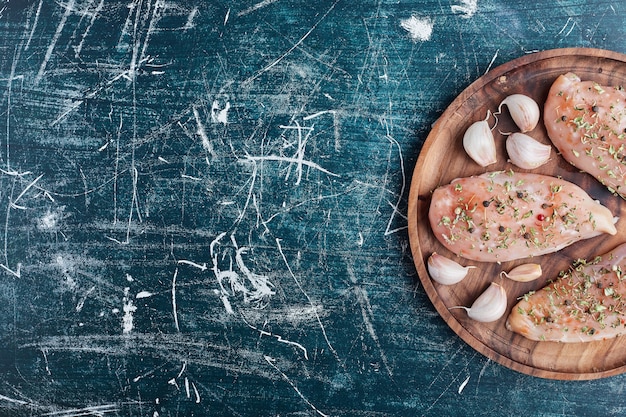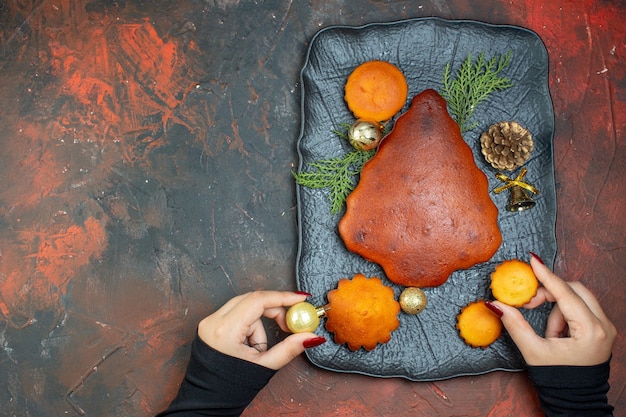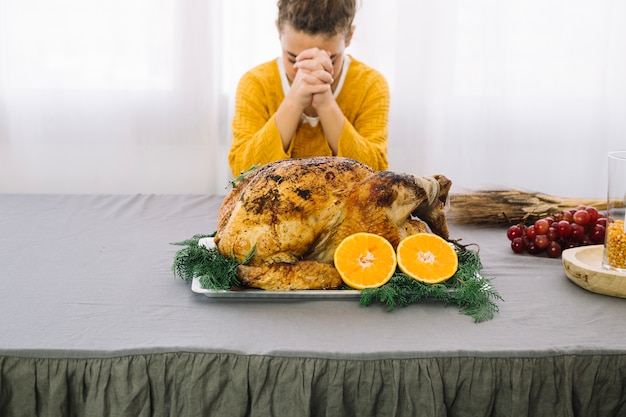Right, let's talk turkey. Or rather, frozen turkey. I know, I know, it's a bit daunting. You've got this massive bird in your freezer, staring back at you with its frosty eyes, and you're thinking, "How on earth am I going to cook this thing?" Don't worry, mate, I've been there. I've wrestled with frozen turkeys myself, and let me tell you, it's not as complicated as it looks. Just follow this step-by-step guide, and you'll be tucking into a delicious roast turkey in no time.
Part 1: Planning Ahead

Choosing the Right Turkey
First things first, you need to choose the right turkey. Remember, you want a bird that's big enough to feed your guests. Now, I always go for a frozen turkey because it's usually cheaper than fresh, and it lasts longer in the freezer. But you've got to make sure it's big enough for everyone. A good rule of thumb is about 1 lb (450 g) per person. And don't forget to factor in the stuffing. If you're planning on stuffing the turkey, you'll need a slightly larger bird. It's a good idea to look at the turkey's weight and size in the shop to make sure it fits your roasting pan.
Thawing the Turkey
Now, the most important thing: thawing. This is absolutely crucial because if you try to cook a frozen turkey, it'll be raw in the middle, and that's a recipe for disaster. The safest way to thaw a turkey is in the refrigerator. It takes about 24 hours for every 5 lb (2.3 kg) of turkey to thaw in the fridge. You'll need to plan ahead, mate! For a 12 lb (5.4 kg) turkey, it'll take about two days to thaw completely.
Now, there's another way to thaw a turkey, but it's a bit riskier: the cold water bath. This method takes about 30 minutes per pound, but you need to keep the water circulating constantly. Change the water every 30 minutes, and make sure the turkey is completely submerged. This method works best for smaller turkeys, as it can be tricky to manage a large bird in a bath. No matter which method you choose, the key is to avoid thawing the turkey at room temperature. It's a recipe for bacteria growth, which can make you ill.
Preparing the Turkey
Once your turkey is thawed, it's time to prep it. This is actually the most fun part, I reckon. Pat the turkey dry with paper towels, and then remove any giblets or neck from the cavity. You can save these to make gravy later. You might also want to remove the turkey's "pope's nose" - the little bit of skin that covers the tail. This can burn during roasting.
Part 2: Getting Ready to Roast

Choosing a Roasting Pan
You'll need a big enough roasting pan to fit your turkey. If you don't have one, you can use a large dutch oven or a baking sheet. However, a roasting pan is ideal because it's specifically designed for roasting turkeys. It's usually made of heavy-duty metal and has a large enough surface area to catch all the drippings.
Brining the Turkey
Now, here's a little trick I've learned over the years: brining. It's not strictly necessary, but it makes the turkey incredibly juicy and flavorful. To brine, simply soak the turkey in a salt-water solution for a few hours or overnight. This helps to season the meat and retain moisture.
Here's how to make a simple brine:
In a large container, dissolve 1 cup of kosher salt in 1 gallon of cold water.
Add 1/2 cup of sugar (optional, but it helps to balance the saltiness).
Add any herbs or spices you like, such as black peppercorns, bay leaves, or thyme.
Submerge the turkey in the brine, making sure it's completely covered.
Refrigerate the turkey in the brine for 4-6 hours, or up to overnight.
Brining really makes a difference, trust me. The turkey will be much more succulent and flavorful.
Part 3: Roasting the Turkey

Preheating the Oven
Preheat your oven to 325°F (165°C). While it's heating up, get your turkey ready to go.
Seasoning the Turkey
Don't forget to season your turkey! I like to use a simple mix of salt, pepper, and herbs like rosemary and thyme. You can also try adding a citrus zest, garlic powder, or paprika to the mix for a bit of a kick. Rub the seasoning all over the turkey, under the skin, and in the cavity. You can even use a butter-based herb mixture to make the skin even crispier.
Stuffing the Turkey (Optional)
If you're stuffing the turkey, now's the time to do it. Be sure to stuff it loosely, and don't overfill the cavity. If you stuff the turkey too tightly, it won't cook evenly and could even harbor bacteria.
Roasting the Turkey
Now, carefully place the turkey in the roasting pan. Remember that roasting rack? It's super important for even cooking. It allows hot air to circulate around the turkey, ensuring it cooks evenly. If you're stuffing it, you'll need to roast it for a longer time, about 15 minutes per pound. If you're not stuffing it, you can roast it for 13 minutes per pound.
Basting the Turkey
While the turkey is roasting, you can baste it with pan juices to help keep it moist. You can use a basting brush or a spoon to pour the juices over the turkey. You don't have to baste the turkey constantly, just every 30 minutes or so.
Part 4: Checking for Doneness
Using a meat thermometer
How do you know if the turkey is cooked? The best way is to use a meat thermometer. Stick it into the thickest part of the thigh, making sure it doesn't touch any bone. The turkey is cooked when the internal temperature reaches 165°F (74°C).
Resting the Turkey
Once the turkey is cooked, let it rest for at least 15 minutes before carving. This allows the juices to redistribute throughout the meat, resulting in a more tender and juicy turkey.
Part 5: Carving the Turkey
Getting Ready to Carve
Use a sharp carving knife and a carving fork to carve the turkey. Start by removing the legs, then the wings, and finally the breast. Slice the breast into thin slices.
Arranging the Turkey
Arrange the carved turkey on a platter, and serve with your favorite sides.
Part 6: Making Gravy
Collecting the Drippings
While the turkey is resting, you can make gravy. Pour the drippings from the roasting pan into a fat separator. This will separate the fat from the juices, which you'll need for the gravy.
Making the Gravy
In a saucepan, whisk together the turkey juices with flour, broth, and seasonings. Bring the mixture to a boil, then reduce the heat and simmer for a few minutes until the gravy has thickened.
Part 7: Leftovers
Storing Leftovers
Store the leftover turkey in airtight containers in the refrigerator for up to 4 days. You can also freeze leftovers for up to 2 months.
Using Leftovers
Leftover turkey is fantastic for sandwiches, salads, soups, and even turkey pot pie! You can also use it to make turkey hash, turkey chili, or even turkey enchiladas. The possibilities are endless!
Part 8: Tips for a Successful Turkey
Tips for Roasting
Don't overcrowd the pan! If your turkey is too big, roast it on two separate racks.
Basting the turkey with pan juices helps to keep it moist.
Use an oven thermometer to make sure your oven is at the correct temperature.
Tips for Brining
Brining can be done in a large pot or a cooler.
Make sure the turkey is completely submerged in the brine.
Don't add any sugar to the brine, as it can make the skin less crispy.
Tips for Thawing
Thaw the turkey in the refrigerator for the safest results.
Don't thaw the turkey at room temperature, as this can create a breeding ground for bacteria.
If you're thawing the turkey in a cold water bath, change the water every 30 minutes.
Part 9: FAQs
Q1: What should I do if my turkey is still frozen?
A: If you've forgotten to thaw your turkey and it's still frozen, there are a few options. If you have time, you can still thaw it in the fridge, but it'll take much longer. You could also try thawing it in a cold water bath, but it'll likely be a bit risky, especially if it's a large bird. If you have no time, you can cook it from frozen, but it'll take much longer and might not be as evenly cooked. You'll need to cook it at a lower temperature for a longer time, and you might need to use a meat thermometer to check for doneness more often.
Q2: How do I know if my turkey is safe to eat?
A: The best way to make sure your turkey is safe to eat is to use a meat thermometer. The internal temperature should reach 165°F (74°C) in the thickest part of the thigh. If you don't have a thermometer, you can check for doneness by making sure the juices run clear when you pierce the thigh with a fork. However, this method is not as reliable as using a thermometer.
Q3: What do I do if my turkey is dry?
A: If your turkey is dry, there's not much you can do to fix it after it's cooked. But you can prevent it from drying out by brining it beforehand, basting it during cooking, and making sure it doesn't overcook.
Q4: Can I use a frozen turkey for a deep-fried turkey?
A: No! Never use a frozen turkey for deep-frying. The turkey must be completely thawed before frying. Frozen turkey in hot oil is a recipe for disaster! It's extremely dangerous, and the oil can splash and cause serious burns. Always thaw your turkey completely before deep-frying.
Q5: How do I make a crispy turkey skin?
A: You can achieve crispy turkey skin by patting it dry before roasting, and by roasting it at a high temperature for the first part of the cooking time. You can also try rubbing the skin with olive oil or butter before roasting.
And there you have it, mate. That's your complete guide to cooking a frozen turkey. Now, go forth and conquer those frozen birds! Trust me, you've got this. Happy roasting!
Everyone is watching

Prime Rib Roast Cooking Time Chart: Per Pound Guide
Cooking TipsPrime rib roast. Just the name conjures images of lavish dinners, crackling fires, and hearty laughter. It’s ...

How Long to Bake Potatoes in the Oven (Perfect Every Time)
Cooking TipsBaked potatoes are a staple in my kitchen. They're incredibly versatile, delicious, and surprisingly easy to m...

Perfect Rice Every Time: The Ultimate Guide to Cooking Rice
Cooking TipsAs a self-proclaimed foodie, I've always been a bit obsessed with rice. It's the foundation of countless cuisi...

The Ultimate Guide to Cooking Asparagus: Tips, Techniques, and Recipes
Cooking TipsAsparagus. The mere mention of this spring delicacy conjures up images of vibrant green spears, crisp and burs...

Ultimate Guide to Cooking the Perfect Thanksgiving Turkey
Cooking TipsThanksgiving. Just the word conjures up images of overflowing tables laden with delicious food, the scent of r...
